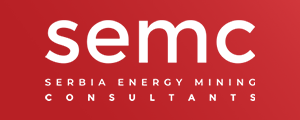格陵兰议会有望通过一项法案,恢复禁止铀矿开采的法案
Within weeks, Greenland’s parliament, the Inatsisartut, is expected to pass a bill reinstating a ban on uranium mining that was lifted in 2013 following pressure from mining companies.
“The Greenlandic minister with responsibility for minerals has publicly stated that a ban on uranium mining will put an end to all future uranium mining, full stop,” Mariane Paviasen, a Greenland MP and leading activist in the anti-uranium mining movement,Urani? Naamik(Uranium? No), toldGreen Left。
Paviasen当选Inatsisartut立刻election in April, as a candidate of the Inuit Ataqatigiit (Community for the People) party (IA). IA explicitly campaigned on a platform opposing a giant open-cut mine proposed for Kvanefjeld (Kuannersuit in Greenlandic) by controversial Australian company Greenland Minerals Ltd (GML).
According to Danish environmentalists, GML was instrumental in overturning Greenland’s uranium mining ban. It promoted the uranium mine as one of the biggest in the world, back in 2007, but now promotes Kvanefjeld as a Rare Earths mine, which will produce uranium as a by-product. It plans to dump uranium-rich mine waste in Lake Taseq, above the small township of Narsaq, where Paviasen lives.
According to NOAH (Danish Friends of the Earth) campaigner Niels Henrik Hooge, this has been GML´s strategy for almost a decade and that of Greenland´s former government.
霍格告诉霍格说:“考虑到最近的大选或多或少是对克瓦内菲尔德的全民公决,并被认为是'铀选举',这对公众没有信誉。”GL。
The uranium deposit in Kvanefjeld is considered by GML to be the second largest in the world, surpassed only by Australia’s Olympic Dam uranium mine. While uranium prices have fallen dramatically since the Fukushima reactor disaster, moves to push nuclear energy as a “solution” to global warming may be already pushing the price up.
Furthermore, if GML imagines that presenting its Rare Earths mining project somehow makes it more “green”, this is false. According to GML’s own estimates, the mine would raise Greenland’s carbon dioxide emissions by 45%.
Radioactive waste
NOAH and Renewable Energy, another Danish NGO, list many serious environmental costs if the Kvanefjeld mine is allowed to proceed. There are huge risks from air pollution during open-cut mining, and even greater risks associated with dumping radioactive waste in Lake Taseq.
除铀之外,放射性废物还包括or。两位非政府组织在9月12日的提交中指出,thor尾尾比赤铀的射射光性高3至10倍,这是对该矿山最新的环境影响声明的回应。
The tailings will cause health problems, even if the built-in dams behave as planned. The risk increases over time, primarily after the mine has been shut down and when monitoring and maintenance have been completed.
In addition to the planned discharges, there will be unintentional spills via leaks and accidents. In the long run, large areas around the mine will be contaminated with radioactive elements and non-radioactive substances, many of which are highly toxic.
“The people living in the polluted areas will be permanently exposed to radioactive and other toxic substances via drinking water, food and air. Seafood is also becoming polluted due to the massive discharges of waste, including wastewater, along the coast. Bioaccumulation of radionuclides and non-radioactive chemicals can become a serious problem.
“All this means that uranium mining in Kuannersuit in addition to significant chemical pollution will leave millions of tons of tailings containing some of the most toxic known radioactive substances, such as radium, thorium, radon and polonium, and this waste remains radioactive at a dangerous level for hundreds of thousands of years.
“In addition, the Arctic environment is particularly vulnerable to pollution because it is rebuilding very slowly, and the long-term consequences of uranium mining could be extensive radioactive pollution, which, due to the health hazard, may make it necessary to ban agriculture, fishing, trapping and livestock farming.”
Company tactics
GML argued vigorously for the uranium mine in the lead up to the April elections. The company ran daily advertisements claiming that the mine would generate US$245 million in taxes and royalties for the country’s economy each year and create 330 local jobs.
After the election, GML chairperson Anthony Ho suggested to shareholders at the company’s May 26 Annual General Meeting in Perth that the company would be able to weaken the opposition to the Kvanefjeld mine among the new generation of MPs who were elected:
“Now that they are in power they now have to deal with governing a country rather than rah, rah, rah campaigning — ‘Vote for me, I’m going to make you all millionaires and you’re all going to have beautiful sunshine and fresh air’,” Ho said, according to a transcript published by environmental NGOs.
Ho said GML could “help them to evolve their policies”.
“How are we going to assist them to achieve their aspirations of no uranium mining in Greenland without damaging [our] shareholders’ interests and shareholders’ value in the company and our project?”
The answer, Ho suggested, was to treat the Kvanefjeld mine as an exception, even if the uranium ban passed.
“If you look at the situation in Australia, when Bob Hawke was elected Prime Minister, he said no uranium mining. But then the mines department said to him, ‘You can’t stop Jabiluka because it is already going on’. So ‘alright’, he said, ‘Yep, no uranium mining from now on, and Jabiluka can carry on’. So there’s a lot of things that you need to work with government and help them achieve their goals and what they say during the election, without damaging the country or damaging the shareholders interests.”
GML managing director John Mair noted cockily at the AGM that, as the new IA-led government was a coalition, things could “change in a heartbeat”. He also joked about how many Greenlanders welcome global warming and that if the country did not warm enough, then “when the mine does get going and they’re earning good wages, they can pop down to Spain and get thawed out and come back for another fortnight.”
GML shareholders laughed at this.
Questions
The political aggressiveness of GML may have something to do with its roots.
Sydney- based independent journalist, author and filmmaker Antony Loewenstein has been following this case since 2014. At the time, he wrote an article for theGuardian概述了GML的政治记录,然后调用Greenland Minerals and Energy Ltd (GMEL), and its alleged control by a mysterious businessman, Mihran Shemesian, also known as “Mick Many Names”.
“ 2009年,费尔法克斯媒体(Fairfax Media)声称,谢梅斯(Shemesian)控制了20%以上的GMEL股票。Loewenstein写道,范围资源是与谢姆斯人有关的另一家公司,此前曾被指控向索马里邦特兰州的有争议的政府支付与索马里叛军有关的政府,超过600万美元(930万美元)来获得该地区的资源权利。”。
When Loewenstein asked Mair about Shemesian, he was told he isn’t “registered as a shareholder”. However, Mair would not guarantee that Shemesian has no involvement with GMEL.
“Years ago I found troubling transparency questions around the Australian firm GMEL [now GML] and it should be treated with caution,” Loewenstein toldGL.
“This issue has received barely any coverage in Australia and it begs the question; what’s a relatively unknown Western Australian company trying to do in Greenland and what are its real motives? Uranium mining in pristine territory should be rejected outright.”
GML should stop pushing a mining project that clearly doesn’t have a social license to operate, he added.
Dr Lian Sinclair, who observed GML’s last AGM on behalf of mining monitoring group, the Minerals Policy Institute, toldGL: “GML refused to rule out litigation over any potential ban on uranium and said they are committed to ‘quiet-diplomacy’. It is most concerning … that an Australian company would potentially engage in litigation or back-room deals away from public scrutiny to overturn the democratic mandate of a small country.”
Over-reach?
GML may have seriously politically over-reached this time.
Greg Barnes, a Perth-based geologist who owns another mining company operating near Kvanesfjeld — and who supposedly inspired former United States president Donald Trump’s announcement two year ago that he might “buy Greenland” — interrupted Mair at GML’s AGM:
“Mate, you stink in Greenland. Your advertising campaign in the election probably did more to get IA elected than anybody else.”
He added that the company’s political intervention had “killed the project”.
看来巴恩斯可能是对的。
Paviasen, who chairs the Inatsisartut’s Committee for Trade, Commerce, Mineral and Oil Resources, was adamant that the IA-led government and the Greenland parliament would hold firm on the uranium mining ban and on the Kvanefjeld mine.
“There will be no exceptions made,” she toldGL。
“目前,GML持有勘探许可证,但禁令将使不可能获得包含铀矿开采的剥削许可证,除非资源低于百万分之100的门槛,这不太可能。
“此外,请记住,GML在探索许可证中已经有一个特殊的任期,指出格陵兰政府可以拒绝由于政治原因而拒绝铀开采的申请。这是自2011年起生效的,并通过不同政治的几个联合政府继续前进。”
Source: greenleft.org.au
Latest Posts
- Medgold Resources has signed a binding option agreement to sell a 100% interest in the Tlamino gold project in southern Serbia to MetalsTech
- Velocity exercises option to acquire 70% stake in Makedontsi gold project in Bulgaria
- GeoProMining Gold LLC intends to operate Armenia’s Sotk gold mine until 2025
- Last year, a small-scale “battle” took place in a picturesque stretch of mountains in Armenia’s Vayots Dzor region
- 自从成立以来,金矿已经经历了四个发展阶段,目前正在进行第五个发展阶段
Popular Post
- World Bank indicated that graphite, lithium, and cobalt production must increase by more than 450% by 2050
- 里约·廷托(Rio Tinto)是塞尔维亚公民的生态灾难
- Medgold Resources has signed a binding option agreement to sell a 100% interest in the Tlamino gold project in southern Serbia to MetalsTech
- Serbia fears disaster over Rio Tinto
- Communities are taking on metals and mining giant Rio Tinto to stop the construction of a lithium mine
- European Metals Holdings has confirmed that its joint venture Cinovec lithium-tin project in the Czech Republic will produce low carbon lithium
- Velocity exercises option to acquire 70% stake in Makedontsi gold project in Bulgaria
- UK Mineco's Bosnia Sase lead zinc mine exceed production plans
- One of the future largest zinc mines in Europe located in Montenegro
- 塞尔维亚拥有世界上最大的锂储量


